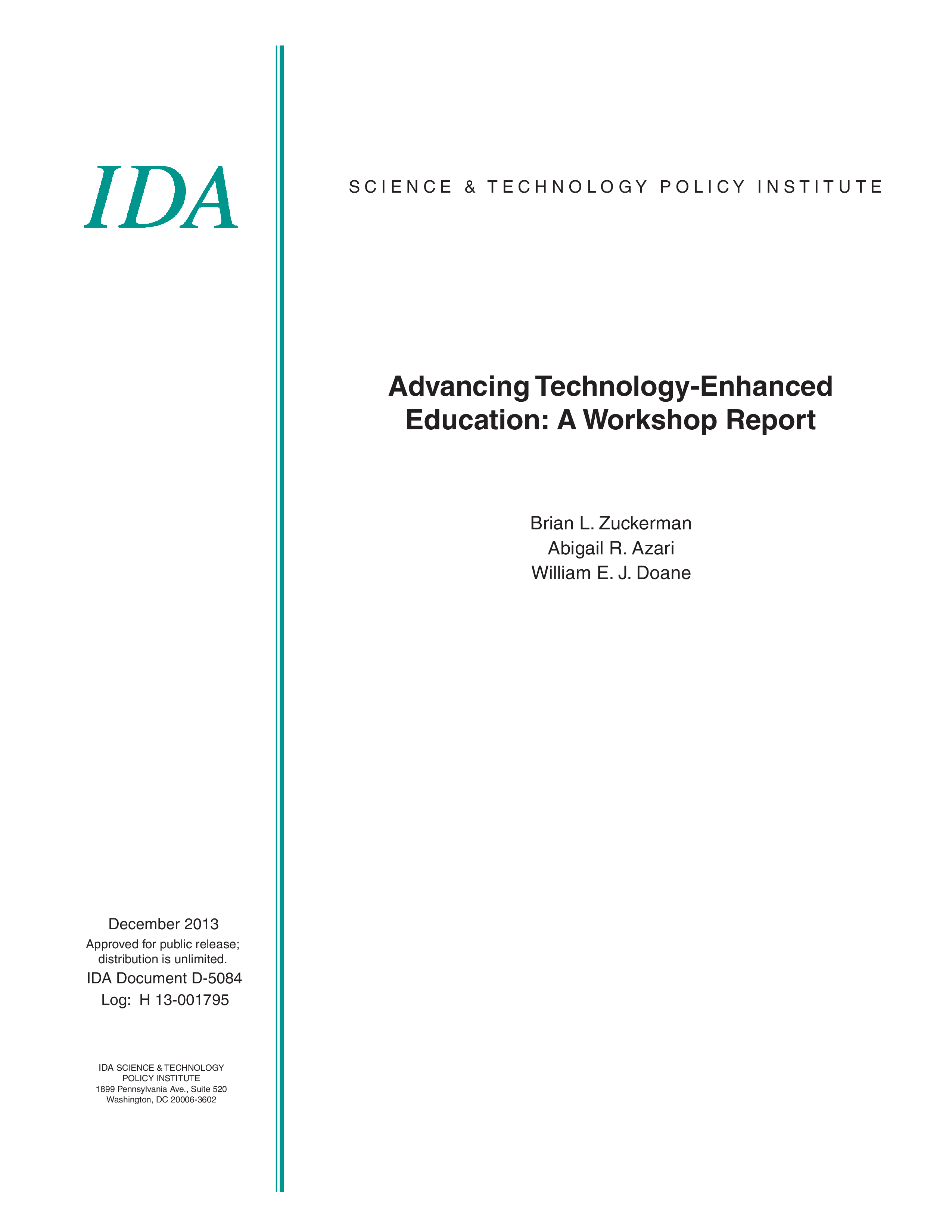On July 29, 2013, the National Science Foundation (NSF) hosted a workshop on
technology-enhanced education that brought together nearly 100 participants, including
representatives of Federal agencies and 2- and 4-year degree-granting institutions as well
as experts in key areas related to technology-enhanced education, assessment, and
learning. The purpose of the workshop was to invite community input to inform Federal
agencies, the White House Office of Science and Technology Policy (OSTP), and the
NSF about how to effectively create U.S. Government strategies to promote advances in
undergraduate education in light of rapid progress in online learning tools and research
on learning.
Workshop participants began by identifying an overall vision for the future of postsecondary education in the United States: computer-mediated learning, anytime, anywhere. Participants also identified a research-oriented vision in support of the overall one: from learning science to learning engineering. Plenary session presenters discussed advances in the fundamental science of learning—the underlying research base as to how individuals learn—and called for the development of a new applied discipline—termed learning engineering—which was intended to translate these fundamental insights into new learning environments and tools.
Technology-enhanced learning environments provide a mechanism for translating fundamental principles of the learning sciences into curricula. These environments offer a cycle of continuous improvement through the collection and analysis of participant data. Learning engineers can quickly identify the strengths and weaknesses of particular environments and refine them through analyses of the large quantities of data produced through participant interactions (e.g., clickstream data, data on problems addressed correctly and incorrectly, and potentially audio or film data intended to measure participant engagement). Finally, the collection and analysis of data may lead to new fundamental hypotheses that can be tested through the learning sciences, which further can be fed back into instructional materials development and teaching practice. This cycle is depicted in the figure on the next page.
Workshop participants began by identifying an overall vision for the future of postsecondary education in the United States: computer-mediated learning, anytime, anywhere. Participants also identified a research-oriented vision in support of the overall one: from learning science to learning engineering. Plenary session presenters discussed advances in the fundamental science of learning—the underlying research base as to how individuals learn—and called for the development of a new applied discipline—termed learning engineering—which was intended to translate these fundamental insights into new learning environments and tools.
Technology-enhanced learning environments provide a mechanism for translating fundamental principles of the learning sciences into curricula. These environments offer a cycle of continuous improvement through the collection and analysis of participant data. Learning engineers can quickly identify the strengths and weaknesses of particular environments and refine them through analyses of the large quantities of data produced through participant interactions (e.g., clickstream data, data on problems addressed correctly and incorrectly, and potentially audio or film data intended to measure participant engagement). Finally, the collection and analysis of data may lead to new fundamental hypotheses that can be tested through the learning sciences, which further can be fed back into instructional materials development and teaching practice. This cycle is depicted in the figure on the next page.

